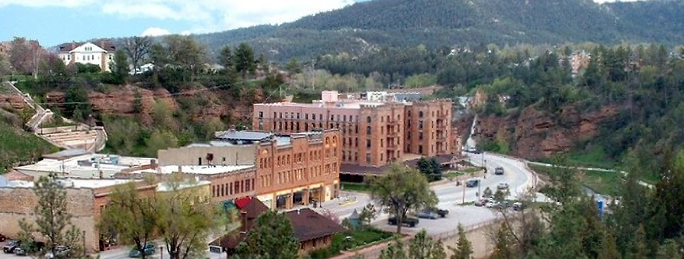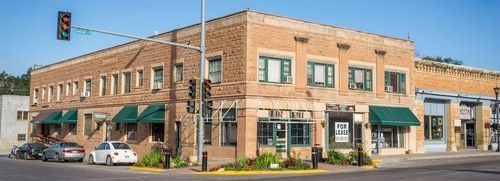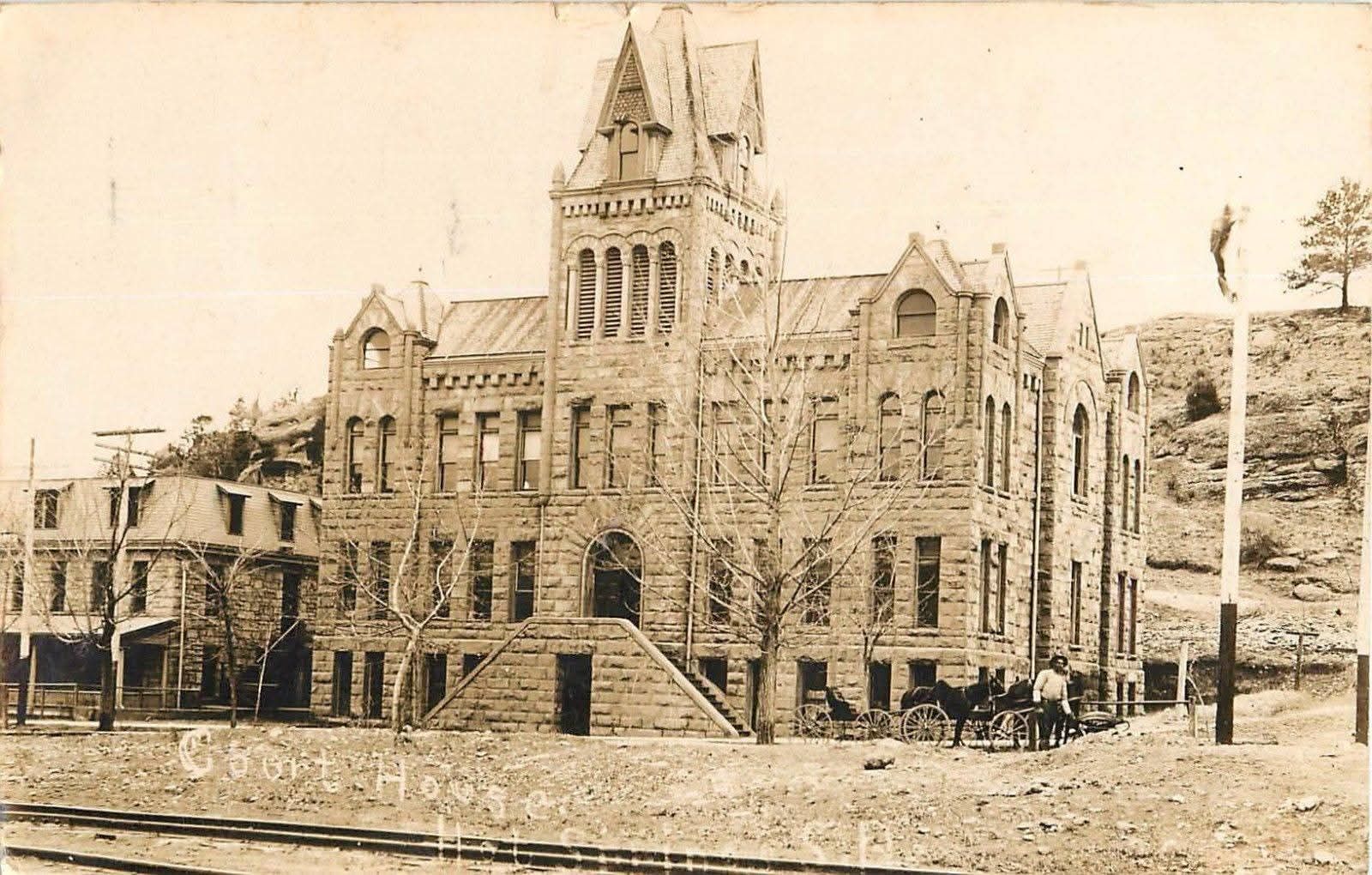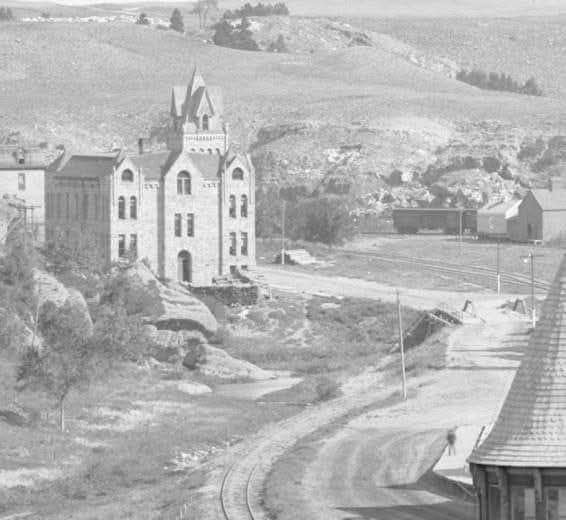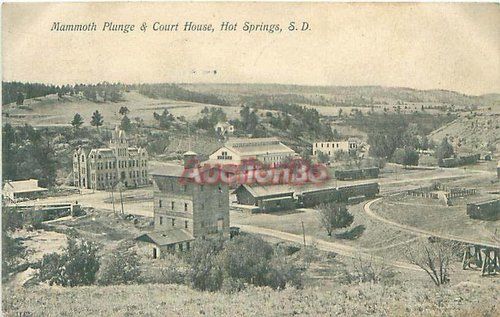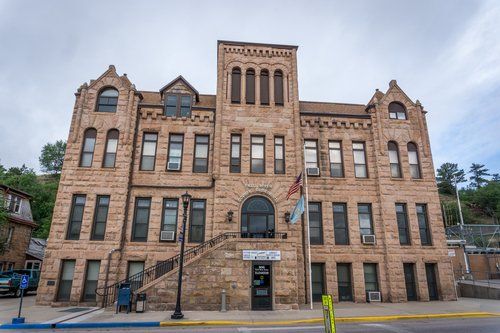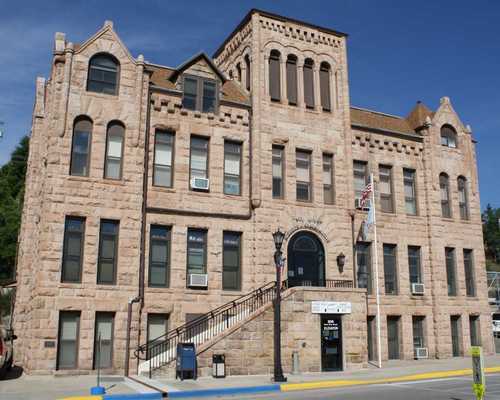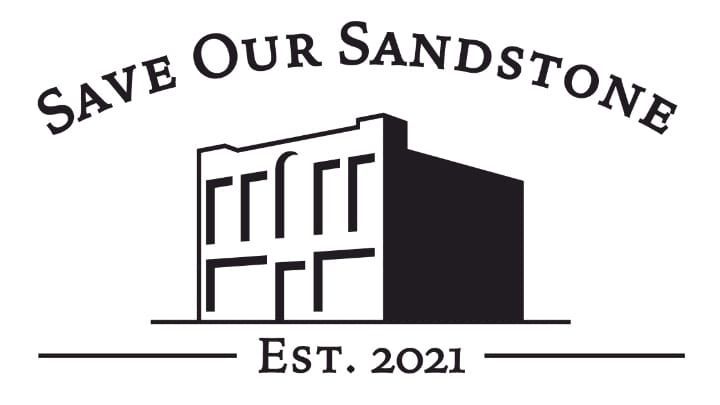Fall River County Courthouse
🧱 Fall River County Courthouse
Address: 906 North River Street, Hot Springs, SD 57747
Built:
1891
First Occupant:
Fall River County Courthouse
Current Occupant:
Fall River County Courthouse
Architect:
Charles P. Brown (commissioned at 2.5% of contract price)
Contractor:
Fred T. Evans (awarded contract for $23,000)
Sandstone Quarry:
Evans Quarry, Fall River County, SD — the largest of the pink sandstone quarries, located five miles east of Hot Springs
Architectural Style:
Local adaptation of Richardsonian Romanesque
📜 Historical Overview
1883 was a formative year for this corner of Dakota Territory. Jennie and Edmund Petty donated the plot of land that became the first official site of Hot Springs. They had the land surveyed, and on January 31, 1883, the first platted lots of Hot Springs were filed under the “Town of Hot Springs,” dedicating the streets and alleys “to the use and benefit of the public.” The original plat can still be read in Plat Book No. 1, page 1 at the Fall River County Courthouse.
On November 17, 1883, Fall River County was formally established “in accordance with a Commission issued by the Governor of Dakota Territory,” appointing Edmund Petty, Elisha P. Chilson, and Wm. P. Phillips as the first County Commissioners. Hot Springs was designated the county seat the following year, 1884.
By the early 1890s, demand for a permanent courthouse had grown. On February 4, 1891, the County Board of Commissioners called a special election to decide whether to construct a new courthouse and jail and to purchase a site for the buildings. Voters approved the measure on February 24, 1891.
Although the building site was briefly disputed, construction began on August 21, 1891. By late October, the sandstone walls had reached the second story; by December, the third story was underway. Offices moved in on January 6, 1892, and the building was formally accepted from contractor Fred T. Evans on January 22, 1892. Legal disputes over payment to Evans delayed final settlement until June 30, 1893, when the South Dakota Supreme Court ruled in his favor.
Designed by Charles P. Brown, the courthouse is an asymmetrical example of Richardsonian Romanesque, featuring a denticulated cornice, Flemish-gabled wall dormers, and a central square tower. The tower’s round-arched arcade is supported by slender Doric columns. Originally topped with a small turret (later removed for easier maintenance), the structure was built of carefully cut Evans Quarry sandstone, laid in distinctive patterns.
In the early 1900s, electric lighting was installed. The original double-sided wooden front stairway fell into disrepair, and in 1917 a judge ordered the sheriff to repair it—the same stairs still in use today. The courthouse flew its first U.S. flag on April 5, 1918, again under judicial order after the county board initially refused to purchase one. A 1927 addition provided offices for the State’s Attorney. The entrance was remodeled with a handrail in 1966, and interior renovations in 1968 cost more than the original construction.
📍 Modern Era
Today, the Fall River County Courthouse remains the tallest building in Hot Springs’ business district and continues to serve as the seat of county government, standing as a testament to the region’s sandstone heritage and civic history.
🔍 Research Notes & Requests
Save Our Sandstone is still seeking:
- Historic photographs of the courthouse during construction
- Documentation of the original turret’s removal
- Detailed records of the 1968 renovation
QR Code Info:
Fall River County Courthouse, built in 1892 from Evans Quarry sandstone, is the tallest building in Hot Springs’ business district. Designed by architect Charles P. Brown in the Richardsonian Romanesque style, it has served as the heart of county government for more than 130 years and remains a proud landmark of Fall River County’s sandstone heritage.
-
City skyline
Photo By: John DoeButton
